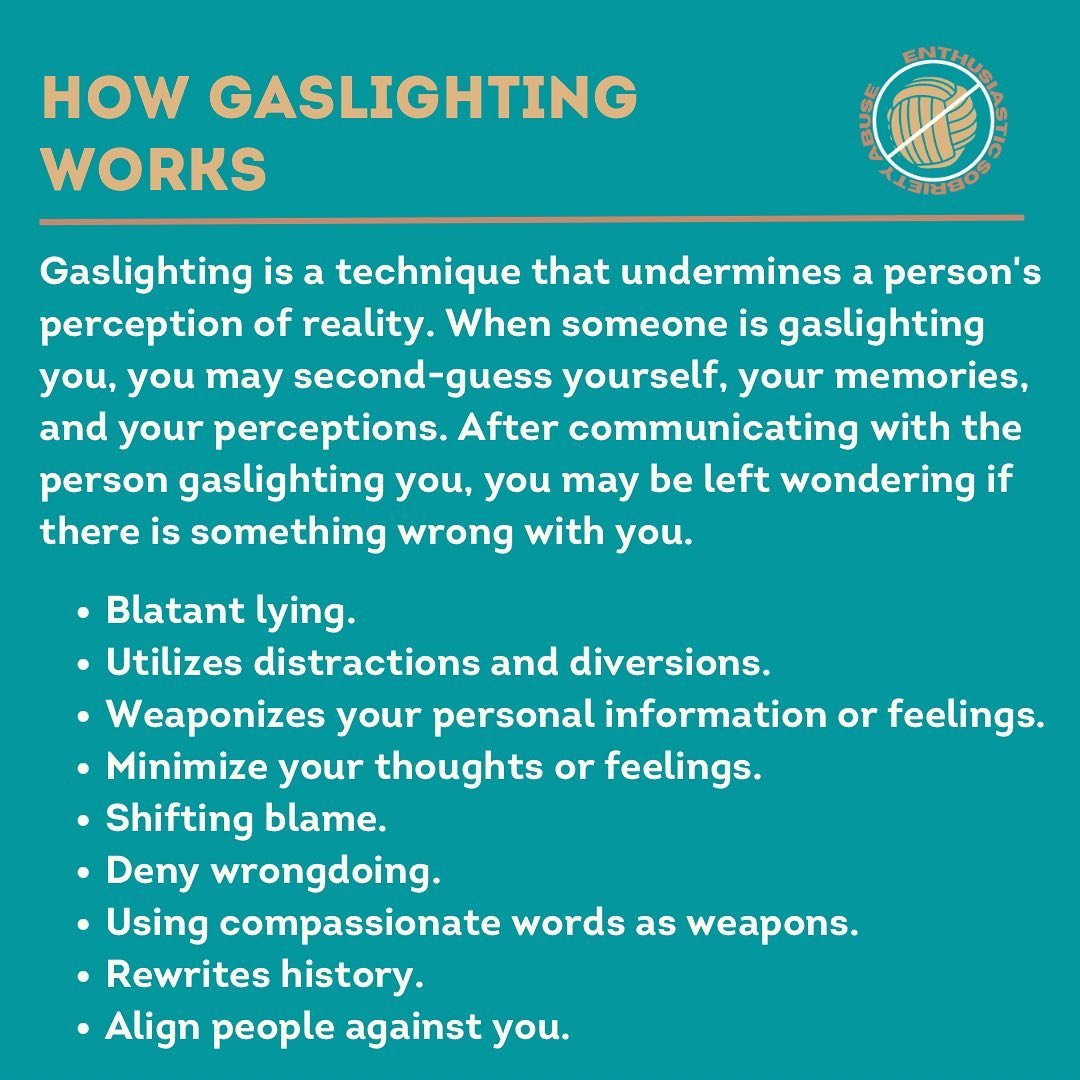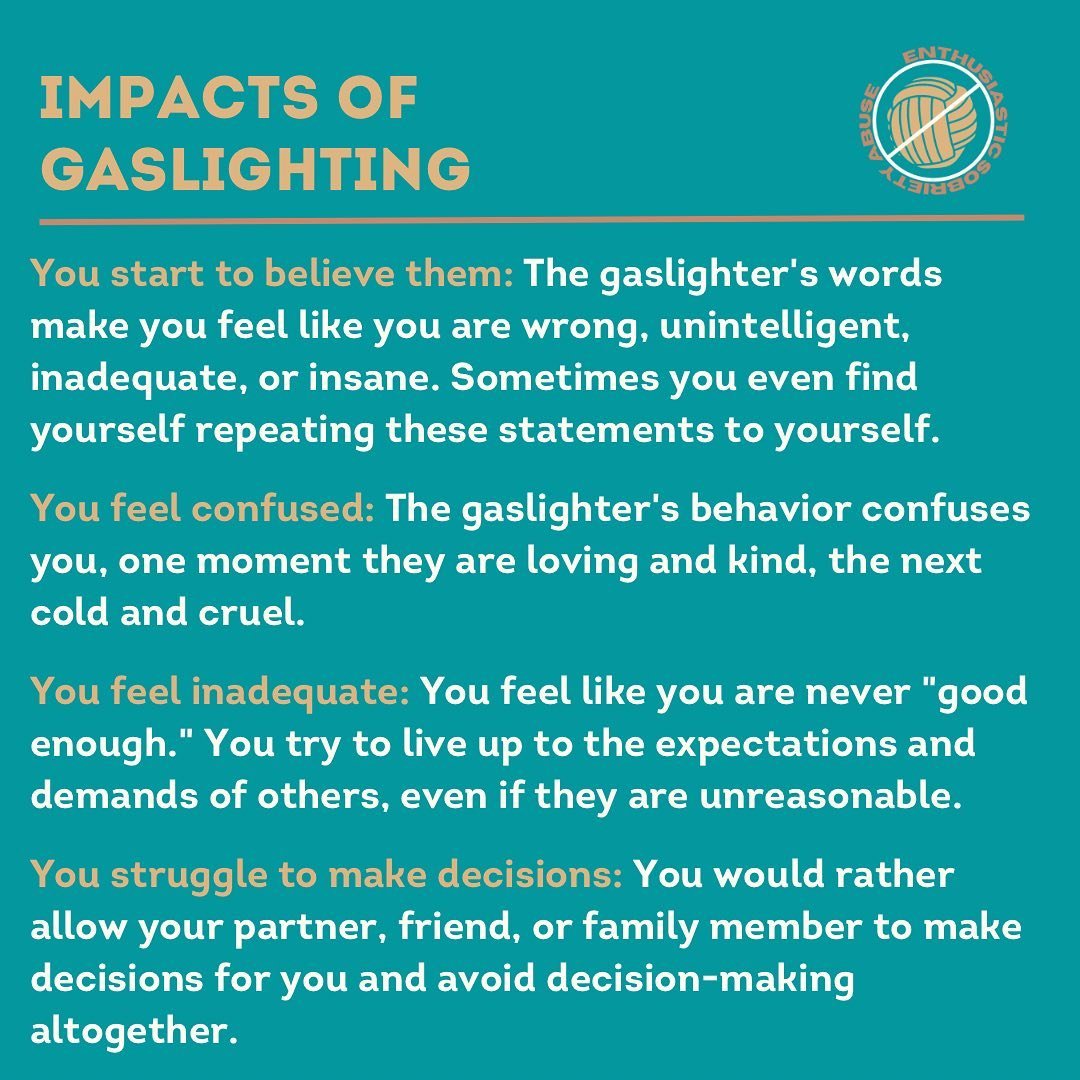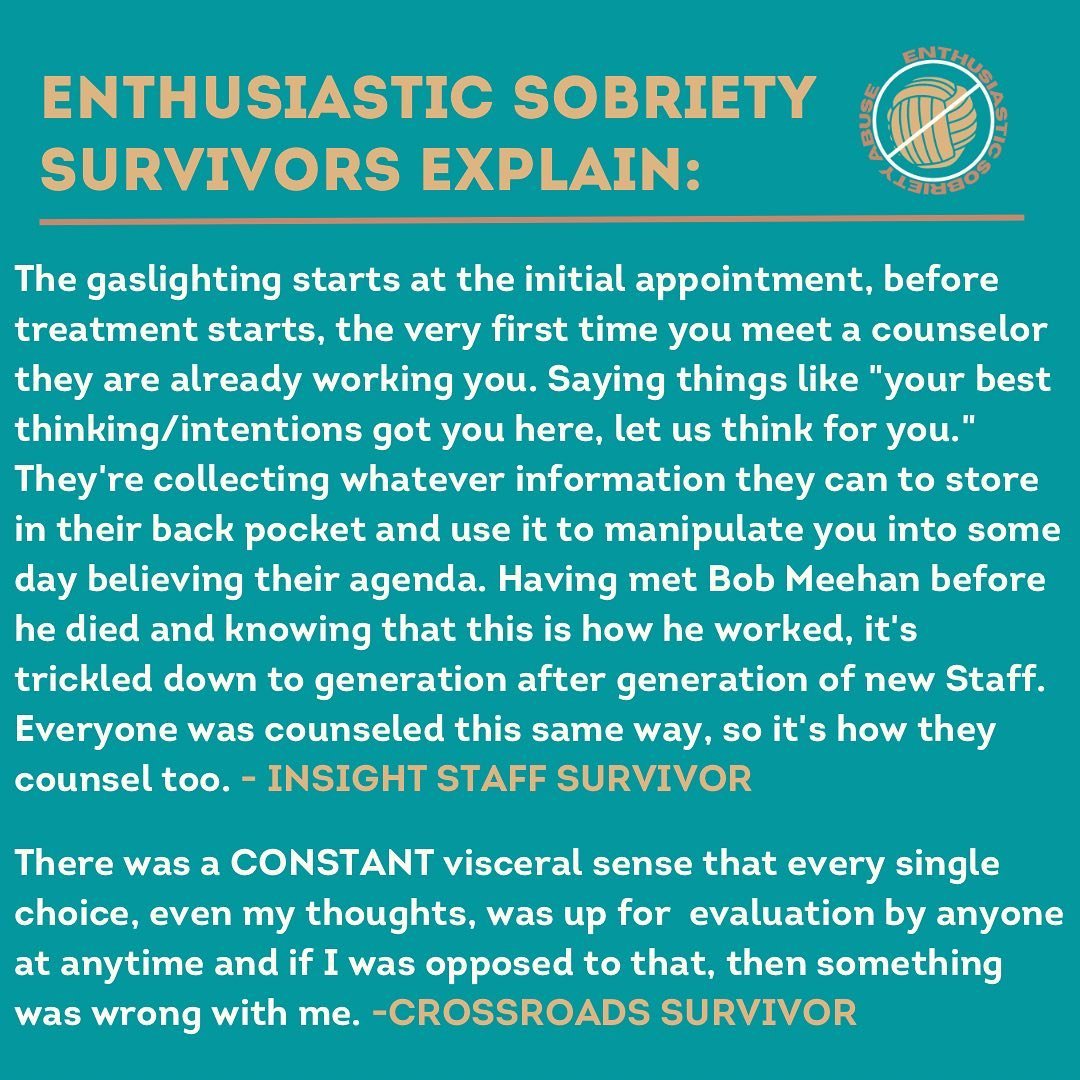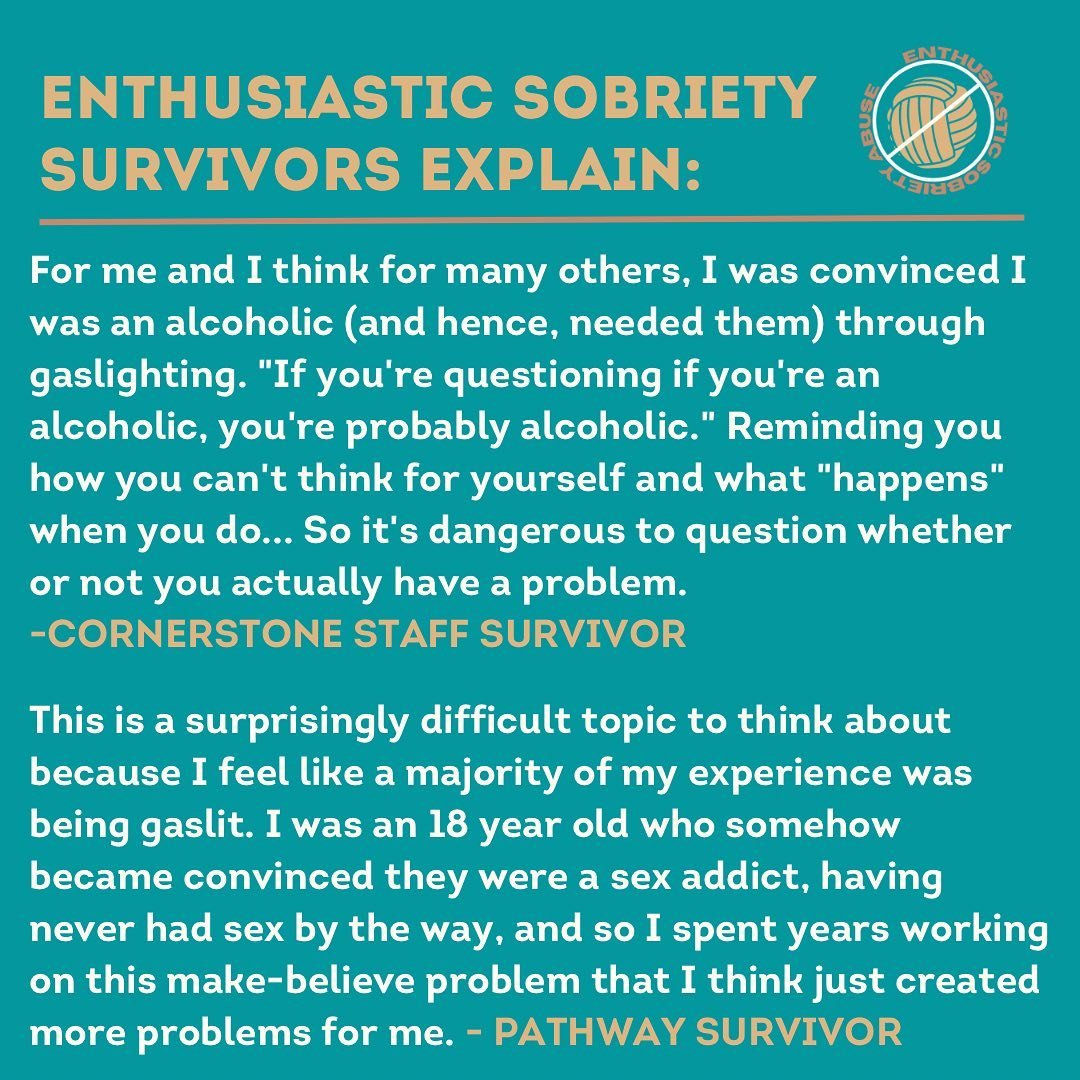Gaslighting and The Group
Gaslighting is a psychological manipulation tactic where one person or group seeks to make another doubt their own reality, perceptions, and sanity. It involves the deliberate distortion of facts, events, or information to create confusion, undermine confidence, and exert control over the victim. The term originates from the play and film "Gas Light," where a husband manipulates his wife into doubting her own sanity by dimming the gas lights and then denying that they're changing. Gaslighting is a form of psychological abuse that can be highly damaging to the victim's mental and emotional well-being.
Here's how gaslighting works:
The ultimate goal of gaslighting is to control and dominate the victim by making them dependent on the manipulator's version of reality. Over time, victims of gaslighting may lose their sense of self, confidence, and critical thinking skills, leading to a state of emotional vulnerability that benefits the manipulator's goals. Recognizing gaslighting and seeking support are crucial steps to counter its effects and regain a sense of autonomy and well-being.
Psychological Impacts of Gaslighting:
The psychological impacts of gaslighting can be profound and include:
1. Doubt and Confusion: Victims of gaslighting often experience doubt about their own perceptions, memory, and judgment due to the constant manipulation of reality.
2. Low Self-Esteem: Gaslighting erodes self-confidence, making victims feel inadequate and incapable of trusting their own thoughts and decisions.
3. Anxiety and Depression: The constant uncertainty and manipulation can lead to heightened anxiety and even depression as victims struggle to make sense of their experiences.
4. Isolation: Gaslighting often isolates victims from their support networks, leaving them more vulnerable and dependent on the manipulator for validation.
5. Dependency: Victims may become emotionally dependent on the manipulator for guidance and affirmation, further reinforcing the manipulator's control.
6. Cognitive Dissonance: Victims experience conflicting beliefs between their own perceptions and the manipulator's version of reality, causing mental distress.
7. Guilt and Self-Blame: Manipulators may shift blame onto the victim, making them feel responsible for the manipulator's actions or the confusion they're experiencing.
8. Loss of Identity: As victims begin to doubt their own thoughts and feelings, they may lose a sense of their own identity and autonomy.
9. Difficulty Trusting Others: Gaslighting can lead to a generalized lack of trust in others and difficulty forming healthy relationships.
Gaslighting in Cults:
Gaslighting is a common technique used by cults to control and manipulate their members:
1. Reality Distortion: Cult leaders may present an altered version of events, history, or teachings, causing members to question their own understanding.
2. Doubt in Outsiders: Cults often portray the outside world as dangerous, corrupt, or misguided, making members less likely to trust external sources of information.
3. Invalidation of Dissent: Members who express doubts or criticisms about the cult's ideology may be shamed, silenced, or isolated, furthering their confusion.
4. Dependency on the Cult: Gaslighting fosters dependency on the cult for understanding reality, creating an environment where members feel they can only trust the cult's perspective.
5. Groupthink Reinforcement: Cults encourage members to consult the group's opinions and interpretations rather than trusting their own judgment.
6. Manipulative Love and Fear: Cults might alternate between showing love and acceptance and then withdrawing it based on members' compliance, creating emotional dependency.
Coping with Gaslighting in Cults:
Educate Yourself: Learn about gaslighting and manipulation tactics to recognize them when they occur.
Seek Support: Reach out to friends, family, or mental health professionals who can provide an objective perspective.
Trust Your Instincts: If something doesn't feel right, don't dismiss your feelings; they may be warning signs of manipulation.
Gather Evidence: Keep a journal of events and conversations to maintain an accurate record of what's happening.
Build a Support Network: Connect with individuals who understand your experience and can offer emotional support.
Leave Gradually: If you're in a cult, consider seeking help and making an exit plan to disentangle yourself from the manipulation.
Gaslighting within cults aims to break down members' critical thinking abilities, making them more submissive to the leader's control. Recognizing gaslighting within a cult is essential for individuals to maintain their sense of self and autonomy and seek support to break free from the cycle of manipulation.
Resources:
Understanding Gaslighting and Its Effects
Is Someone Gaslighting You? Learn the Warning Signs
How to Recognize Gaslighting and Get Help
Psychological Tactics of Abusers, Gaslighters, and Cults
Keith Raniere’s ‘Sex Cult’ Was Powered by Gaslighting, Experts and Witnesses Testify









